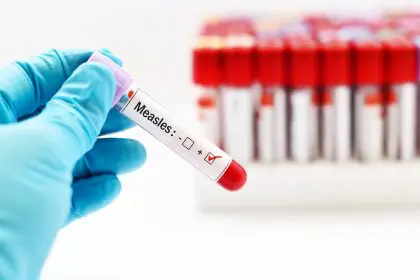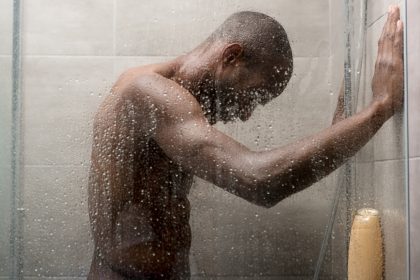For something considered taboo, improper pool hygiene practices are surprisingly common. It’s a behavior many people have witnessed, heard about, or—even if they won’t admit it—participated in themselves. The idea may be unpleasant, but there’s more beneath the surface than just bad manners. From psychological shortcuts to social dynamics and even chemical misunderstandings, this behavior raises important questions about hygiene, public spaces and human nature.
Understanding the psychology
There’s a strange mix of convenience, rebellion and misjudgment that drives people to break pool etiquette rules. For many, the pool represents relaxation, and the act of leaving the water to visit a restroom seems like an unnecessary disruption. But for others, it’s a subtle boundary test—pushing limits in a space shared by others.
At its core, disregarding pool hygiene rules is often driven by a lack of immediate consequence. Unlike a crowded elevator or a restaurant, pools create a sense of anonymity. The water becomes a mask. There’s no visible evidence. No public confrontation. It’s almost as if the act didn’t happen.
People also rationalize their behavior by assuming everyone else is doing it. When people feel that an action is widespread—even if socially discouraged—they’re more likely to repeat it themselves. It’s a classic example of group psychology overriding personal responsibility.
Misunderstandings about pool chemistry
One of the most common justifications people use is the assumption that chlorine will “kill everything.” This is only half true.
While chlorine is used to disinfect pool water, it doesn’t instantly neutralize every contaminant. In fact, when waste reacts with chlorine, it produces chloramines, a group of chemicals that not only reduce chlorine’s ability to sanitize but also irritate swimmers’ eyes, lungs and skin.
This reaction is responsible for the strong, stinging smell people often associate with pools. That odor isn’t chlorine itself, but rather the byproduct of chlorine doing its job—sometimes in overdrive—because of contaminants in the water.
Despite this, people continue to use pool chemistry as a safety net. The perception that the water is “clean anyway” becomes a misguided permission slip. Unfortunately, this misunderstanding contributes to long-term problems for both swimmers and pool staff.
The power of unspoken social norms
Children are often scolded for improper pool behavior, but many adults break the same rules without ever admitting it. This contradiction reveals how unspoken norms evolve. Some people even recall being told as kids, “It’s okay, just this once,” which subtly plants the idea that the act is harmless—or at least acceptable under the radar.
In group settings, people often take cues from others. If one person jokes about breaking pool rules or claims it’s “no big deal,” it lowers the barrier for everyone else. This social permission is problematic, not just because of hygiene, but because it slowly erodes respect for shared public spaces.
And it doesn’t end with pools. When people disregard public etiquette in one area, it tends to affect others. It’s about more than just water—it’s about trust, health and the invisible agreements we make in shared environments.
Convenience and facility design issues
Sometimes, the reason is as simple as convenience. Getting out of the pool, drying off, finding a restroom and returning can feel like a hassle—especially when someone is mid-conversation or just enjoying the moment.
But it’s not just convenience. Some pools, especially large public ones, lack easy restroom access. When bathrooms are far away, dirty or crowded, people are less likely to use them. Instead, they convince themselves that breaking rules is the lesser evil.
This highlights the role infrastructure plays in behavior. If public pools were designed with easier access to clean, well-maintained restrooms, more people might choose to use them instead of taking shortcuts in the water.
The myth of detection systems
One of the longest-running myths about pool rule-breaking is the idea that there’s a special dye that will instantly turn the water a bright color, revealing the culprit. While no such dye exists in commercial use, the idea is so powerful that it influences behavior.
Fear of being caught is often a stronger motivator than moral responsibility. But because most people realize the dye doesn’t exist, they weigh the risks and often decide to take the chance. That’s where the danger lies.
What if pools did have detection systems? Would people be more respectful of the water they share with others? The very existence of this myth suggests that deep down, people know certain behaviors are wrong—but they don’t stop unless there’s a consequence.
Real public health implications
The dangers of poor pool hygiene extend far beyond embarrassment. The presence of contaminants in pool water leads to the formation of chemicals that can irritate eyes and trigger asthma-like symptoms in some individuals. For those with existing respiratory conditions, the impact can be even more severe.
Additionally, when chlorine has to combat more contaminants, it becomes less effective overall. That means harmful bacteria and viruses—already a concern in crowded pools—have a better chance of surviving. People may unknowingly expose themselves and others to infections because someone didn’t want to follow proper protocols.
This is where public health intersects with personal decisions. It’s not just about what someone gets away with—it’s about the invisible harm they might cause to others.
Changing behavior through awareness
Education is a powerful tool. When people understand the science behind what happens when pool rules are broken, they’re more likely to change their behavior. Instead of shaming people, awareness campaigns should aim to create a sense of pride in maintaining safe, clean environments.
Public pools could benefit from bold but respectful signage explaining the risks, supported by social campaigns that make good behavior the cool, responsible choice. When being courteous becomes part of the culture, people are less likely to slip into harmful habits.
Just like with recycling or washing hands, behavior change happens when people believe their actions matter—and when they believe others are doing the same.
Setting the tone early
Parents play a major role in how children view public hygiene. If kids hear from trusted adults that breaking pool rules is acceptable, they’re likely to carry that belief into adulthood.
But if the message is clear—”we don’t do that because we respect others”—it lays the groundwork for long-term change. Pool etiquette, like any other social rule, is learned. The earlier it’s instilled, the better the outcomes for everyone.
And when children see adults modeling the same behavior, the message becomes even stronger. It’s one thing to say the right thing. It’s another to do it.
Building empathy and accountability
Empathy is a quiet but powerful motivator. When people stop to consider how their actions affect others—the child with asthma, the person with skin sensitivities, the lifeguard who has to maintain the pool—it shifts the narrative.
Breaking pool rules becomes less of a lazy shortcut and more of a violation of trust. It’s not just about water—it’s about people. About shared responsibility. About making choices that contribute to the health and dignity of everyone using the same space.
Accountability doesn’t require shaming. It requires honesty and a willingness to admit that something as small as a bathroom break can make a big difference.
Creating lasting change
Better restroom facilities. Clear, friendly signage. Campaigns that explain why clean pools matter—not just for aesthetics, but for safety. It’s about making the right choice feel natural, not burdensome.
Communities have already tackled similar problems. Smoking bans. Seatbelt laws. Reusable bags. Change is possible when people believe it’s worth it. The same can happen with pools.
At the end of the day, pools are more than just bodies of water—they are shared spaces that reflect how we treat one another. When someone chooses to follow proper hygiene rules, they’re saying, “I respect the people around me.” That small decision carries weight.
It shows up in fewer health risks. In clearer water. In better air quality. And most importantly, in the trust we place in one another to keep public spaces clean and safe.
This story was created using AI technology.











